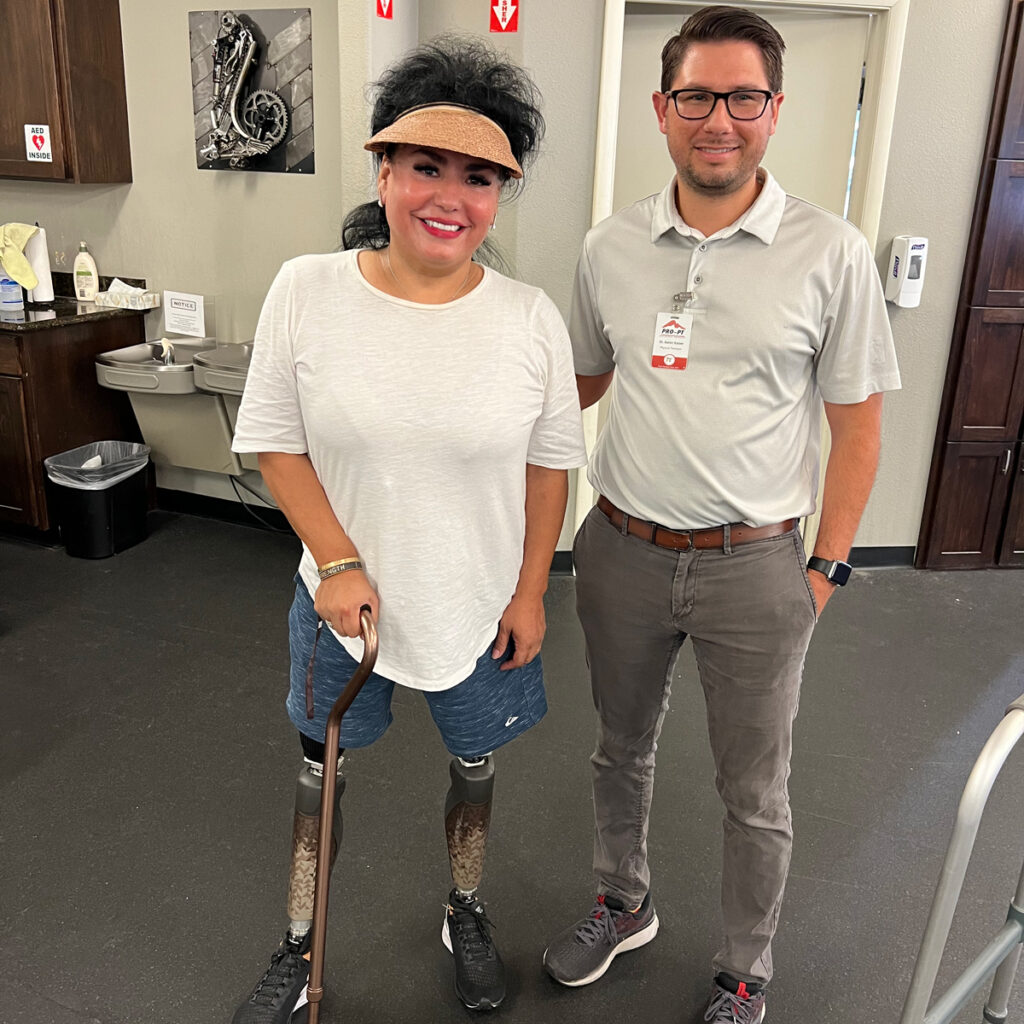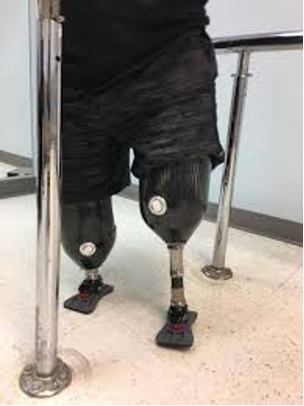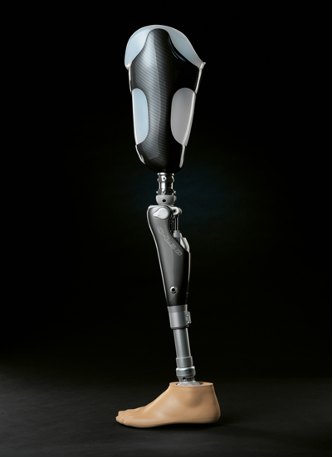In 2014, Andrea was doing a routine task that everyone does, picking up her mail at her Exeter home, when she was hit by a truck.
It was a major collision—she was flown to Community Regional Medical Center for treatment of serious injuries. ER doctors determined that her crushed legs required amputation above her knees in order to save her life.
After the surgery, Andrea started the tough road to recovery, which started by learning how to walk again with the help of prosthetic limbs. During this process, she worked with physical therapists at PRO~PT’s Exeter and Lindsay clinics, who guided her strength training and helped her become comfortable with prosthetics. Andrea credits physical therapy as a vital part of her healing process.
Andrea is an example of the power of physical therapy directed by professional and experienced physical therapists at PRO~PT. Read on to follow her journey.

Evaluating the Patient's Condition & Creating a PT Plan
Initially, Andrea’s physical therapy plan focused on strengthening her core and arms, as well as stretching her leg muscles.
She worked with Joseph Terrill, a former PRO~PT therapist who specializes in treating amputees to prevent contractures—a condition in which muscles, tendons, or other tissues shorten and harden. After amputations, people are more likely to have contractures due to muscular imbalances and sustained positions.
Since Andrea needed to sit in a wheelchair for much of her recovery, her treatment plan also focused on her hip flexors to avoid problems with shortening and contractures.

Getting Comfortable with Prosthetics: Stubbies
Andrea’s first prosthetics were uniquely tailored for patients to start walking again. Called “stubbies,” they are short, rigid, and do not have knee or ankle joints, which makes walking on even surfaces tricky. Walking with only the use of hip muscles and prosthetics is incredibly taxing and requires much more of her energy and strength.
Andrea also faced difficulties in relearning static and dynamic balance in her stubbies, while simultaneously working to increase her muscular and cardiovascular endurance.
Healing & Strengthening After Amputation
After learning to use her first stubbies, Andrea’s prosthetics were gradually lengthened so she could stand at her normal height. During this time, Andrea continued to work on her strength and set a goal to lose weight to decrease the burden on her legs.
Andrea worked extremely hard and started seeing results—her residual limbs started to change shape, and she soon needed new prosthetic liners to ensure a proper fit. She also worked to build up her arms since they assist her in sitting up on her own.

Transitioning to C-Legs Prosthetics
In 2021, Andrea transitioned into her final prosthetics, referred to as C-Legs. These have a hydraulic knee joint and an ankle joint that help Andrea walk more easily on uneven ground.
Walking with C-Legs is very different from walking with stubbies because it requires a different pattern of movement. PRO~PT Physical Therapist Aaron Kasser took over Andrea’s care in 2021, guiding Andrea as she used front-wheeled walkers and canes to practice walking with these new prosthetics.
Having Positivity & Determination During Recovery with PT
Andrea continues her treatment with Aaron and the rest of the staff at PRO~PT in Exeter today. Her ultimate goal is to walk out in her community with only the help of a cane.
Throughout her journey, Andrea’s has been grateful to PRO~PT for the motivation and guidance toward her recovery. However, her positivity and determination have been an inspiration to the people around her as well!
“It is easy to say, but it is hard to do,” Andrea said. “But from one amputee to another—if I can do it, you can do it.”







